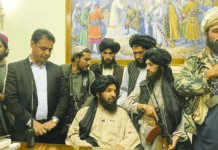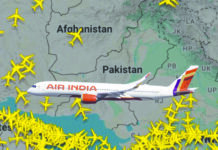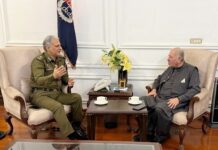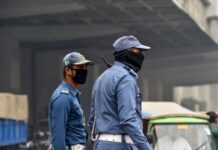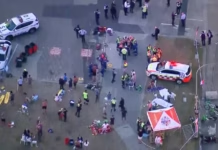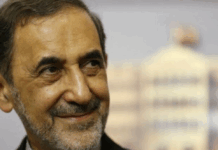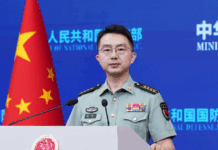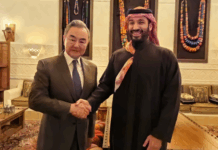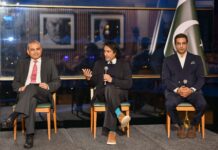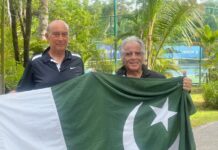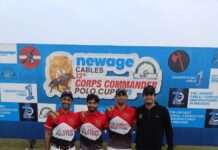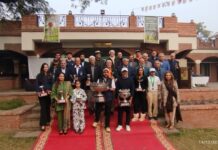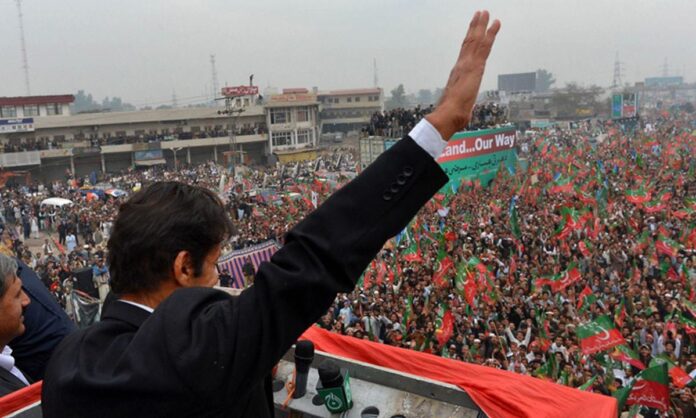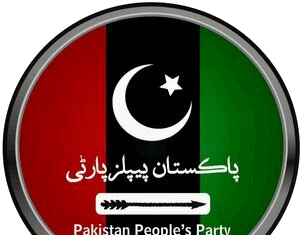Repeated statements by American US politicians about the political situation in Pakistan; specifically veteran strategist Zalmay Khalilzad, have reinforced a perception on the street; that words from the Americans work. Despite the fact that both the warring sides in the Pakistani political divide seem to follow the ‘now or never’ attitude for the other party; all strangely; the ultra-radicals included seem to agree on what is expressed in the USA. During the last week or so, such statements have emanated on two separate occasions.
The concern about Pakistan political situation and especially about the safety of PTI chairman Imran Khan; his likely being disqualified for life and so on; seem to strongly indicate that the PTI lobbying in Washington has been effective. At the same time, it also reinforces the street perception that Pakistan is being debated and discussed by the international stakeholders. The recent talk of shunting Imran Khan completely out of the political horizon, can be decisions not taken in absence of the international stakeholders.
A chronology of the political games being played in Pakistan since its inception demonstrates that the US role has been sought after by the political parties or families with the singular aim of reaching the seat of power in Islamabad. A run through the strategy followed by the late Benazir Bhutto during her days in political wilderness from the 1990s until 2007 shows that she always made it a point to curry the American support for the purpose of making things easy at home in Pakistan.
The democratic movement, if any, in the form of PTI agitation is a minority dissidence. The vote bank of PPP and PML(N) are more concerned about reaping the exploits in connivance with the established order. Practically, it is back to the Zia era with a more confusing political landscape. That snapshot reinforces the hard perception on the street that the USA might not want anyone to be victimized; but seems to be ready ‘to work with’ the current version of ‘hybrid arrangement’ in place.
Every veteran journalist might know that the two weeks from 17 November 1988 to 2 December 1988 were spent striking out power sharing details between the Army and the PPP through the good offices of the Americans; in the shape of Richard Armitage and other State Department officials. Once the deal was done; the late leader was sworn in as the Prime Minister of Pakistan.
The biggest manifestation of US influence then was BB’s compliant attitude towards the Army, which still had the Afghan project in hand. That intervention was first visible when the PPP government supported the abortive coup by General Tanai, then the equally unsuccessful Jalalabad offensive to please the power brokers. Likewise, despite having cultivated the anti-US faction in the party during the struggle years, she was quick to isolate and discourage the radical element and give way to ‘electables’; whose very political composition called for the maintaining of the status quo at all costs.
The late leader clung to that formula when again planning a return to power in 2007. At that point, she even tried to curry favour with the Israeli entities for being acceptable in the corridors of power. The biggest mistake the late leader made then was to seek a similar role for herself, which the then military dictator Pervez Musharraf was performing; a commitment to continue the War on Terror; the legacy of 9/11. The resulting scenario was that she was warned and assassinated in questionable circumstances; the clues to which are still deliberately shrouded in mystery.
The other political group; the PML(N) and its other factions could never graduate upward from being establishment hangers on; and consequently, the international players never felt the need to reach out to them and communicate with them. As a matter of fact, the PML(N) during all its tenures sheepishly followed the establishment dictates; save Kargil, where it was found to be the sleeping partner and during the 1998 nuclear explosions; when it exploited the military pressure to retaliate over 11 May 1998 Indian nuclear explosions to its advantage; projecting PML(N) leadership as hawks in foreign policy.
Likewise, the military leadership too have depended upon the US nod to unleash its abuse of human rights; prominent among them late generals Zia-ul Haq and Pervez Musharraf. That blank cheque for the military dictatorships has been issued by the international stakeholders under the pretext of ‘fighting communism through Afghan war’ or ‘waging a war on terror’. The Pakistani society is still recovering from the aftereffects of people kidnapped by the law enforcement agencies local and foreign under the influence of false or weak intelligence leads, in the process playing havoc with ordinary lives.
The crux of the matter; the American statements apparently looking like taking a neutral line for all the political groups in Pakistan; even at the cost of embarrassing the opposition; are subtle signals to the local establishment to sort things out. The ease with which the constitutional hotchpotch was allowed to lapse in the favor of the sitting government; speaks of ominous shadows which still seem to dictate how the major decision-making mechanisms in Pakistan are likely to be managed to keep the ‘project going’.
Here it might not be forgotten that Pakistan’s incumbent government has made SOS contacts with friendly governments, including the US Administration, over what it seeks, influencing the decision-making process in the IMF towards the advantage of Pakistan. Furthermore; a parallel dialogue taking place between the US and Pakistani services cadres towards a new defence paradigm; all indicate that the likely form that battered Pakistan is going to take is to be influenced by the international stakeholders.
Pakistan looks like a new ‘sick man of south Asia’, the title was last used for Caliphal Turkey; for whom the western powers coined the term ’sick man of Europe’. Towards that end; IMF will sooner or later decide the path Pakistan will be required to take. The IMF grip on every decision can be gauged from the PM’s halfhearted bid to bail out the bikers’ having hit snags over IMF objections.
As discussed earlier; the aftereffects of the China diplomatic coup in helping mend fences between Iran and Saudi Arabia had caught the USA and Israel off guard. In an unusual act of retaliation, the Azerbaijani front has been ignited to keep the ‘Islamic Republic’ busy. Here it may be noted that Pakistani defence forces took part in military exercises in Baku, back in 2021; when the PTI government then, part of the hybrid arrangement, was in power. Israel was also one of the prominent participants of that event. These relations under the developing circumstances can be further enhanced to make Pakistan a credible participant in the new schemes of things. Here it may be noted that the geopolitical positioning of a nation state decides the favors it can get in the international scene. For a Pakistan, literally on the edge; there are many spoken and unspoken vulnerabilities.
In the backdrop of these vulnerabilities, coupled with uncertainty about the scheduled electoral process on the back of an uncertain economic position, there is a general feeling amongst the civil society bastions that the ‘regimented society’ is slowly spreading its reach, where people feel the constitution is being held in abeyance. That feeling has prompted the IMF to clarify that its proposed programs do not interfere with democratic process in any recipient country.
The scenario is replete with uncertainties still. The democratic movement, if any, in the form of PTI agitation is a minority dissidence. The vote bank of PPP and PML(N) are more concerned about reaping the exploits in connivance with the established order. Practically, it is back to the Zia era with a more confusing political landscape. That snapshot reinforces the hard perception on the street that the USA might not want anyone to be victimized; but seems to be ready ‘to work with’ the current version of ‘hybrid arrangement’ in place.


